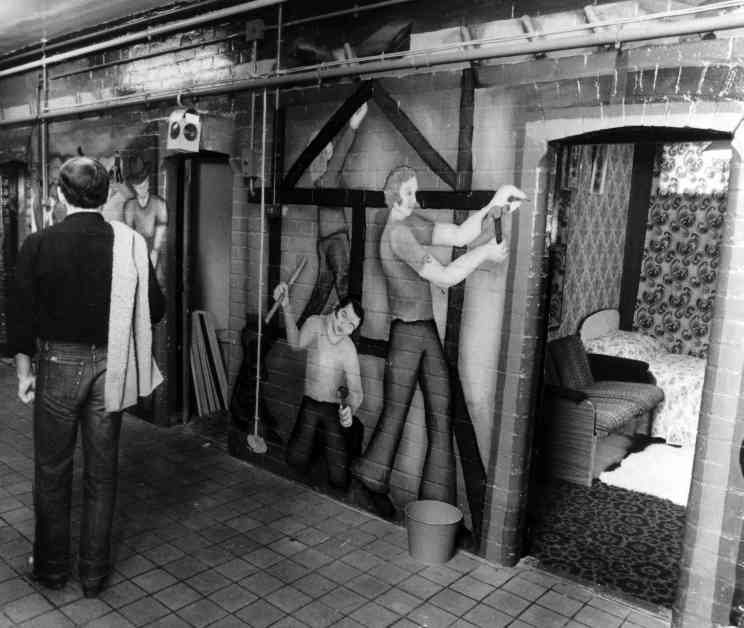Scotland’s Barlinnie Special Unit: A Revolutionary Approach to Prison
Scotland’s prison system has long been a subject of scrutiny, with issues of violence, overcrowding, and lack of rehabilitation programs plaguing the facilities. However, amidst this grim landscape, the Barlinnie Special Unit emerged as a beacon of hope and innovation. Dr. Kirstin Anderson’s new book, “The Barlinnie Special Unit: Art, Punishment & Innovation,” delves into the history of this unique institution and the lessons it offers for modern prison systems.
Established in the 1970s, the Barlinnie Special Unit took a radical approach to dealing with some of Scotland’s most violent and dangerous inmates. At a time when Scottish prisons were notorious for their harsh conditions and high levels of violence, the BSU offered a different path. Instead of relying on punitive measures like isolation and physical punishment, the unit focused on therapy and rehabilitation.
A Shift in Perspective
The traditional approach to dealing with violent prisoners in Scotland involved harsh punishments and isolation. The most troublesome inmates were often sent to remote facilities, where they faced brutal conditions and little hope of rehabilitation. The Barlinnie Special Unit challenged this paradigm by offering a more humane and holistic approach to punishment.
Led by prison officer Ken Murray and forensic psychologist Ian Stephen, the BSU sought to address the underlying issues driving violent behavior in inmates. Rather than simply punishing them, the unit aimed to understand and heal the psychological wounds that contributed to their criminal actions. This shift in perspective was met with skepticism and resistance from within the prison system, but it ultimately proved to be effective in reducing violence and promoting rehabilitation.
A New Model for Rehabilitation
One of the key features of the Barlinnie Special Unit was its focus on therapy and vocational training. Inmates were given the opportunity to engage in artistic pursuits, such as painting and sculpting, as well as to participate in educational programs. They were allowed to wear their own clothes, receive visits from loved ones, and engage in meaningful interactions with prison staff.
This approach had a profound impact on the inmates, many of whom had never experienced such a level of compassion and support. Rather than being treated as irredeemable criminals, they were seen as individuals with the potential for change and growth. This shift in attitude fostered a sense of community and mutual respect within the unit, leading to a significant reduction in violent incidents.
In addition to the therapeutic programs offered, the BSU also implemented measures to assess and address psychopathic tendencies in inmates. Through the work of psychologist David J Cooke, it was discovered that a significant portion of the inmates exhibited psychopathic traits. Despite prevailing beliefs that psychopaths were untreatable, the BSU’s approach to therapy and rehabilitation proved otherwise.
Challenges and Controversies
While the Barlinnie Special Unit was hailed as a success in many ways, it was not without its challenges and controversies. The shift towards a more humane and rehabilitative model of punishment faced resistance from both within the prison system and from the public. Critics argued that the inmates were being given an easy ride and that the unit was not providing adequate punishment for their crimes.
The closure of the BSU in 1994 marked the end of an era in Scottish prison reform. Despite its successes, the unit was ultimately seen as too radical and controversial to sustain in the long term. Today, Scotland’s prison system continues to grapple with issues of violence, overcrowding, and recidivism, highlighting the need for innovative approaches like those pioneered by the Barlinnie Special Unit.
In conclusion, the story of the Barlinnie Special Unit serves as a powerful reminder of the potential for change and transformation within the prison system. By prioritizing rehabilitation, therapy, and compassion, the unit was able to achieve remarkable results in reducing violence and promoting positive outcomes for inmates. As Scotland continues to grapple with the challenges of its prison system, the lessons of the BSU offer a path forward towards a more humane and effective model of punishment.
































